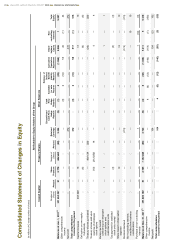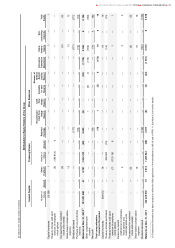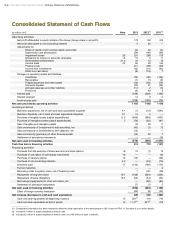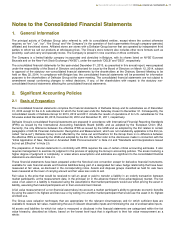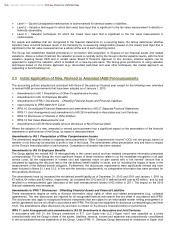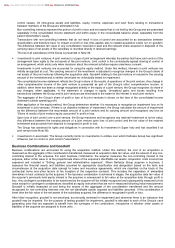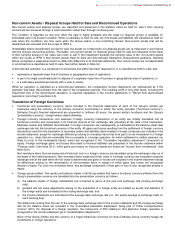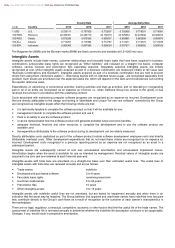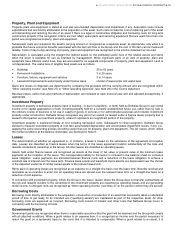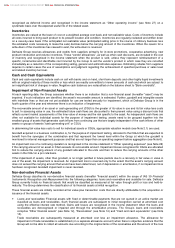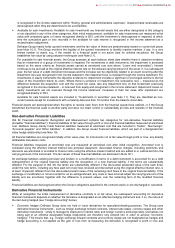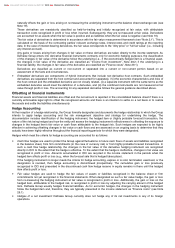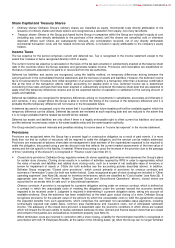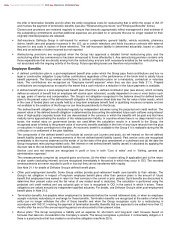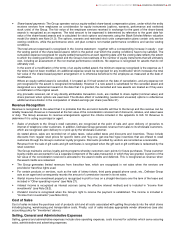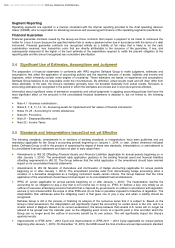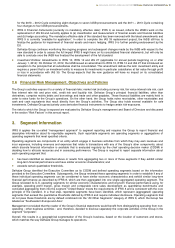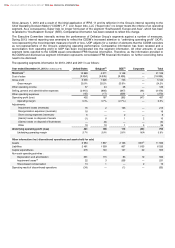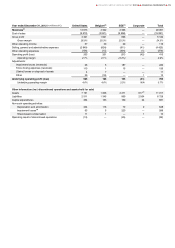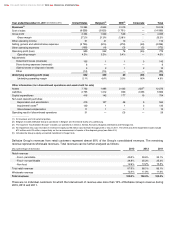Food Lion 2013 Annual Report Download - page 86
Download and view the complete annual report
Please find page 86 of the 2013 Food Lion annual report below. You can navigate through the pages in the report by either clicking on the pages listed below, or by using the keyword search tool below to find specific information within the annual report.
recognized as deferred income and recognized in the income statement as “Other operating income” (see Note 27) on a
systematic basis over the expected useful life of the related asset.
Inventories
Inventories are valued at the lower of cost on a weighted average cost basis and net realizable value. Costs of inventory include
all costs incurred to bring each product to its present location and condition. Inventories are regularly reviewed and written down
on a case-by-case basis if the anticipated net realizable value (anticipated selling price in the course of ordinary business less
the estimated costs necessary to make the sale) declines below the carrying amount of the inventories. When the reason for a
write-down of the inventories has ceased to exist, the write-down is reversed.
Delhaize Group receives allowances and credits from suppliers primarily for in-store promotions, cooperative advertising, new
product introduction and volume incentives. These “vendor allowances”, as well as other cash discounts, are included in the cost
of inventory and recognized in the income statement when the product is sold, unless they represent reimbursement of a
specific, incremental and identifiable cost incurred by the Group to sell the vendor’s product in which case they are recorded
immediately as a reduction of the corresponding selling, general and administrative expenses. Estimating rebates from suppliers
requires in certain cases the use of assumptions and judgment regarding the achievement of specified purchase or sales level
and related inventory turnover.
Cash and Cash Equivalents
Cash and cash equivalents include cash on call with banks and on hand, short-term deposits and other highly liquid investments
with an original maturity of three months or less which are readily convertible to known amounts of cash and which are subject to
an insignificant risk of changes in value. Negative cash balances are reclassified on the balance sheet to “Bank overdrafts”.
Impairment of Non-Financial Assets
At each reporting date, the Group assesses whether there is an indication that a non-financial asset (hereafter “asset”) may be
impaired. If such indications are identified, the asset’s recoverable amount is estimated. Further, goodwill and intangible assets
with indefinite lives or that are not yet available for use are tested annually for impairment, which at Delhaize Group is in the
fourth quarter of the year and whenever there is an indication of impairment.
The recoverable amount of an asset or cash-generating unit (CGU) is the greater of its value in use and its fair value less costs
to sell. In assessing value in use, the estimated future cash flows are discounted to their present value using a discount rate that
reflects current market assessments of the time value of money and the risk specific to the asset. As independent cash flows are
often not available for individual assets for the purpose of impairment testing, assets need to be grouped together into the
smallest group of assets that generates cash inflows from continuing use that are largely independent of the cash inflows of other
assets or groups of assets (“cash generating unit” or CGU).
In determining fair value less costs to sell for individual assets or CGUs, appropriate valuation models (see Note 2.1) are used.
Goodwill acquired in a business combination is, for the purpose of impairment testing, allocated to the CGUs that are expected to
benefit from the synergies of the combination and that represent the lowest level within the Group at which the goodwill is
monitored for internal management purposes and that are not larger than an operating segment before aggregation (see Note 6).
An impairment loss of a continuing operation is recognized in the income statement in "Other operating expenses" (see Note 28)
if the carrying amount of an asset or CGU exceeds its recoverable amount. Impairment losses recognized for CGUs are allocated
first to reduce the carrying amount of any goodwill allocated to the units and then to reduce the carrying amounts of the other
assets in the CGU on a pro rata basis.
If the impairment of assets, other than goodwill, is no longer justified in future periods due to a recovery in fair value or value in
use of the asset, the impairment is reversed. An impairment loss is reversed only to the extent that the asset’s carrying amount
does not exceed the carrying amount that would have been determined, net of depreciation or amortization, if no impairment loss
had been recognized. Goodwill impairment is never reversed.
Non-derivative Financial Assets
Delhaize Group classifies its non-derivative financial assets (hereafter “financial assets”) within the scope of IAS 39 Financial
Instruments: Recognition and Measurement into the following categories: loans and receivables and available for sale. Delhaize
Group currently holds no financial assets that would be classified as measured at fair value through profit or loss and held-to-
maturity. The Group determines the classification of its financial assets at initial recognition.
These financial assets are initially recorded at fair value plus transaction costs that are directly attributable to the acquisition or
issuance of the financial assets.
Loans and receivables: Financial assets with fixed or determinable payments that are not quoted in an active market are
classified as loans and receivables. Such financial assets are subsequent to initial recognition carried at amortized cost
using the effective interest rate method. Gains and losses are recognized in the income statement when the loans and
receivables are derecognized or impaired and through the amortization process. The Group’s loans and receivables
comprise “Other financial assets” (see Note 12), “Receivables” (see Note 14) and “Cash and cash equivalents” (see Note
15).
Trade receivables are subsequently measured at amortized cost less an impairment allowance. The allowance for
impairment of trade receivables is established (on a separate allowance account) when there is objective evidence that the
Group will not be able to collect all amounts due according to the original terms of the receivables and the amount of the loss
84
DELHAIZE GROUP ANNUAL REPORT 2013
FINANCIAL STATEMENTS


